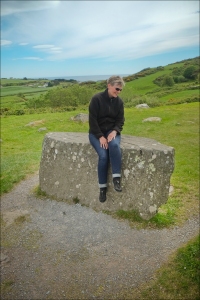 The Dutch don’t just love their bikes, they have embraced them on a level that borders on obsession. Don’t get me wrong I love bikes and think it’s amazing that they have incorporated bicycles into the fabric of their lives and created an incredibly healthy lifestyle.
The Dutch don’t just love their bikes, they have embraced them on a level that borders on obsession. Don’t get me wrong I love bikes and think it’s amazing that they have incorporated bicycles into the fabric of their lives and created an incredibly healthy lifestyle.
There are some interesting stats about Dutch bike riders. A higher percentage of Dutch ride bikes then any other country. As of 2012 there were estimated to be 18 million bicycles or 1.3 per citizen old enough to ride. In the 4 years since, bike popularity has continued to grow tremendously. Some say that now there are as many as 2.9 bikes per Dutch citizen. With the exception of competitive riders, nobody seems to wear a helmet and yet they have less head injuries then anyone else. By 12 years old most children have been trained in the rules of the road and must pass a traffic exam to receive their Verkeersdiploma (traffic certificate).

In cities 85% of all students commute to school on bikes and, for adults, over half of all journeys are made by bicycle. Now some towns have fietsstraats (bike streets) which are roads where bicycles are considered to be the primary and preferred form of transport and cars and other motorised vehicles are allowed “as guests”. There is even a growing trend towards a complete separation of bicycle routes from motor vehicle routes called the unravelling of modes. In 2012 the Hovenring, the first suspended bicycle roundabout in the world, was built over a large and busy road intersection, where before its construction cyclists had to cross busy roads.

Hovenring By John Tarantino
So what have we learned? Well, they clearly love their bikes, are pretty good at operating them and are willing to invest in the infrastructure. But no, I’m afraid it goes way beyond that. This is a transportation revolution and in all revolutions there are winners and losers. The Dutch love of these two wheeled little devils coupled with their proficiency at using them has conspired to turn the Netherlands into a nation of Bike Hoarders. I know that sounds harsh, but the evidence is all around you. With 3 bikes per person and no storage, it’s like all that crap grandma has been hoarding for decades has moved out onto the sidewalk.

Bikes are everywhere. In the cities they lean against most walls and are attached to every available vertical structure. All the train stations have bike parks designed, I’m assuming, for commuters. They have become impromptu bike storage yards filled with hundreds, if not thousands of bikes that never move. These mounds are starting to distort into strange shapes and juxtapositions as the once treasured objects, now discarded, become as intertwined and impenetrable as a bramble bush.


This bike has been lying on it’s side for two weeks now. I want to pick it up but I’m curious how long it will stay there.

Bicycles have seized control of both the sideways and the bike lanes.






This Bloemendaal resident told me that most of these bikes haven’t moved in a year and that she has to hunt for a spot everyday. She owns three bikes!
Not only do they dominate the landscape, these low-tech transporters have managed to move up the food chain and have eclipsed both cars and pedestrians for supremacy of the roadways. Motorists are far more concerned about hitting a bicyclist then the rider is about being hit. This has a lot to do with the insurance laws. Unless the bicyclist intentionally runs into you the motorist is always at fault. Pedestrians are just left to fend for themselves while trying to dodge everything that moves. My wife is certain they’re trying to kill us slow moving, old school walkers. Accidentally stepping off the sideway into the bike lane is tantamount to suicide.

Sure they look innocent enough with their shiny wheels and cute little saddle bags, but don’t be fooled. As this dominance has taken root the size, speed and diversity of the enemy has increased logarithmically. Now there are regular bikes, tantem bikes, electric bikes, mopeds, motor scooters, bikes with load carrying trailers, large box delivery bikes, recumbents, velomobiles (enclosed bike cars), large tricycles, bikes with multiple panniers , bikes with two baby holders and, remarkably, bikes with three baby holders and room for a dog and all are vying for control of the asphalt.





Remember expressions like ” the pedestrian always has the right of way” or when crosswalks were safe passages through a busy hostile world? Not anymore, oh no! There was a war and the pedestrians lost. If these madcap pedal powered warriors just didn’t hate us mere walkers so badly. Surely there’s room for all of us? So be careful out there and look in every direction. They really might be out to get you.










































































































































































































































































